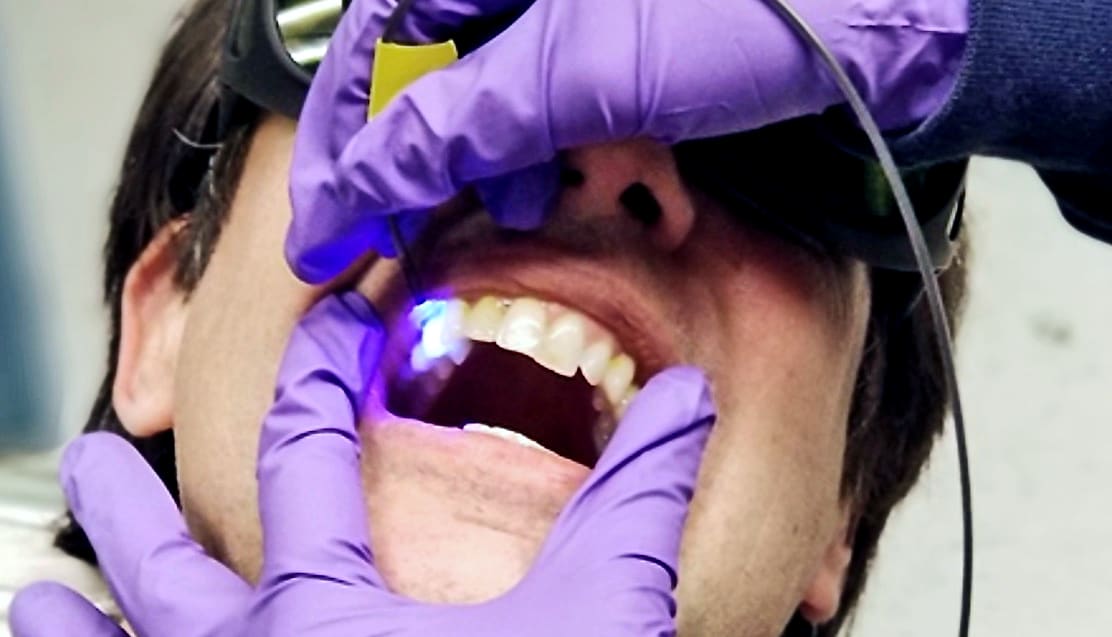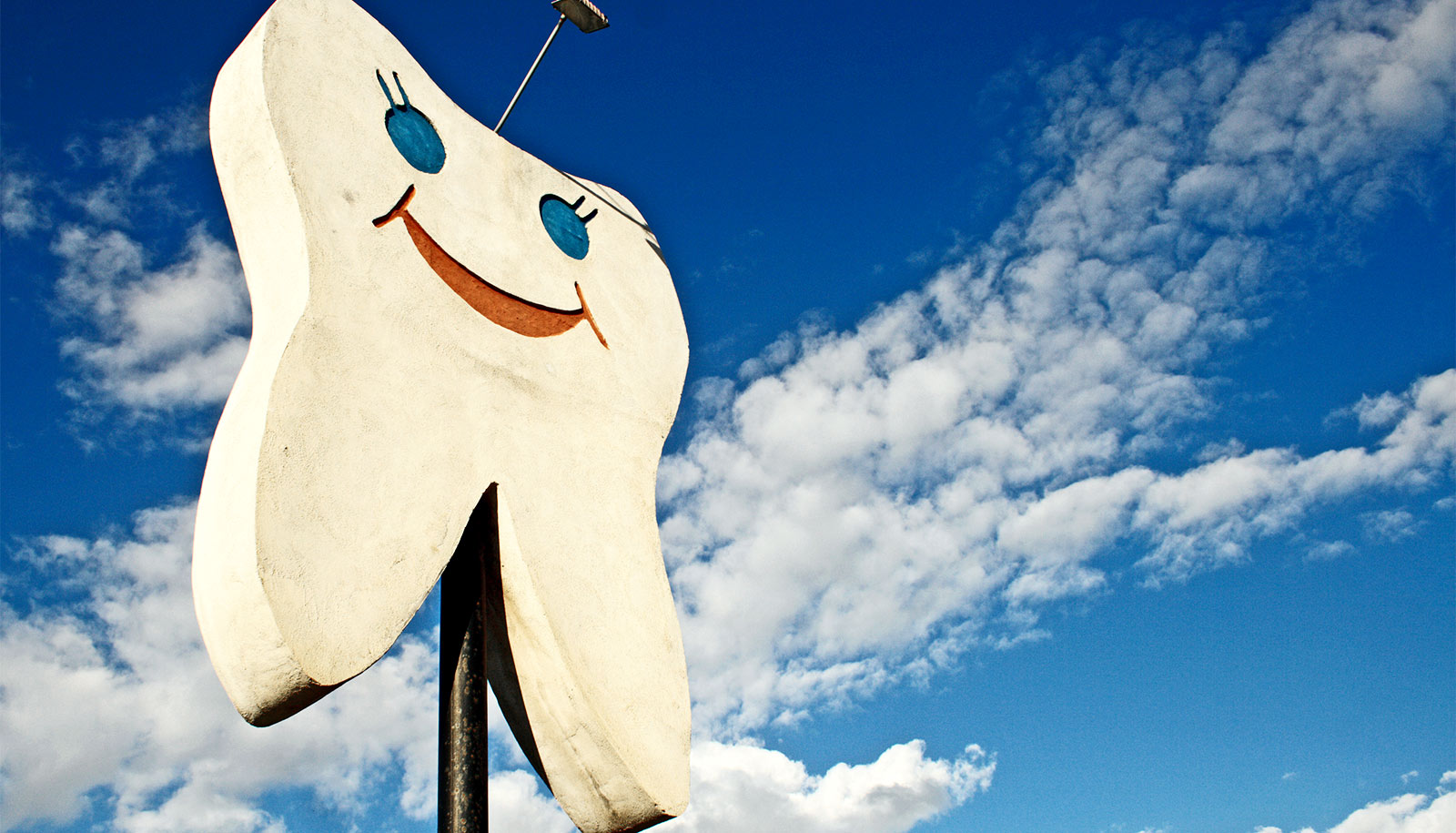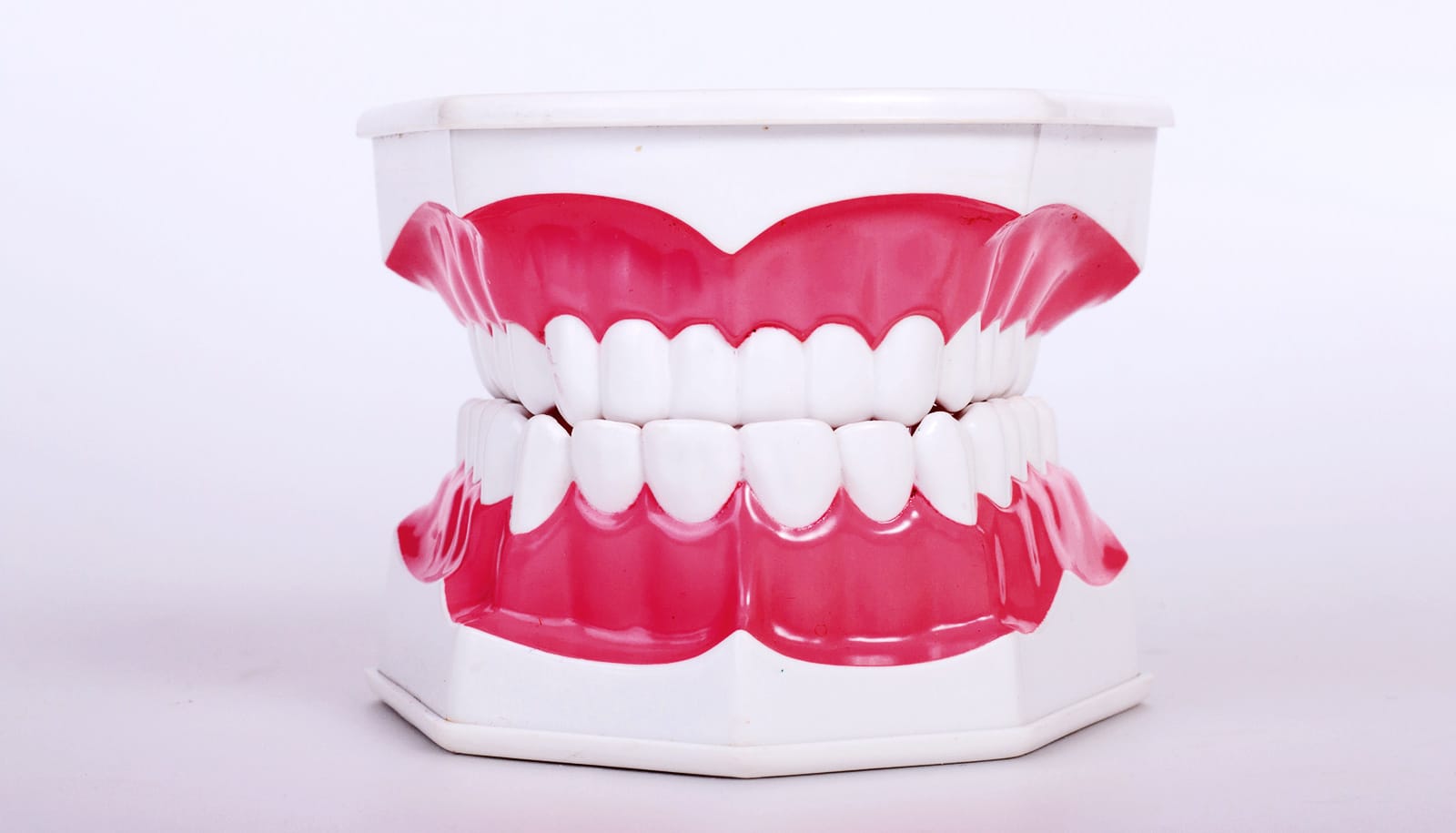A new dental tool uses LED light to spot the acidic conditions that lead to cavities.
You and your dentist have a lot of tools and techniques for stopping cavities, but detecting the specific chemical conditions that can lead to them and then preventing them from ever getting started is much harder.
The new O-pH system is a prototype optical device that emits an LED light and measures the reactions of that light, the fluorescence, with an FDA-approved chemical dye applied to teeth.
The O-pH then produces a numerical reading of the pH, or acidity, of the plaque covering those teeth. Knowing how acidic the plaque is can tell dentists and patients what area of a tooth is most at risk of developing a cavity.
“Plaque has a lot of bacteria that produce acid when they interact with the sugar in our food,” says Manuja Sharma, a doctoral student in the electrical and computer engineering department at the University of Washington, and lead author of the paper in IEEE Transactions on Biomedical Engineering.
“This acid is what causes the corrosion of the tooth surface and eventually cavities. So, if we can capture information about the acidic activity, we can get an idea of how bacteria are growing in the dental biofilm, or plaque.”
Not all bacteria in that biofilm are bad or will lead to cavities, so measuring the acidity of the environment can tell a dentist what they need to know about the threat of developing problems, Sharma says. That can limit the need to test for specific harmful bacteria, of which there can be a multitude.
To test the device, researchers recruited 30 patients between the ages of 10 and 18, with a median age of 15. The researchers chose kids for their study in large part because the enamel on kids’ teeth is much thinner than that of adults, so getting early warning of acid erosion is even more important.
The test is non-invasive. While the dye is applied to the teeth, the probe that transmits and collects light while hovering over the surface of a tooth is at the end of a length of cord. The collected light travels back to a central box that provides a pH reading. Researchers read the conditions on the patients’ teeth several times before and after sugar rinses and other condition changes, such as pre- and post-professional dental cleaning.
Eric Seibel, senior author and research professor of mechanical engineering in the College of Engineering, says the idea for adding the acidity test as a new clinical procedure came from envisioning that when a patient first sits in the dental chair, before their teeth get cleaned, “a dentist would rinse them with the tasteless fluorescent dye solution and then get their teeth optically scanned to look for high acid production areas where the enamel is getting demineralized.”
The researchers report that one limitation to their study was being unable to consistently measure the same location on each tooth during each phase of testing. To address this limitation, in particular, the researchers are evolving their device to a version that produces images for dentists that instantly show the exact location of high acidity, where the next cavity may occur.
“We do need more results to show how effective it is for diagnosis, but it can definitely help us understand some of your oral health quantitatively,” says Sharma. “It can also help educate patients about the effects of sugar on the chemistry of plaque. We can show them, live, what happens, and that is an experience they’ll remember and say, OK, fine, I need to cut down on sugar!”
The National Science Foundation, Oral Health Monitor, Institute of Translational Health Sciences, and the National Center for Advancing Translational Sciences of the National Institutes of Health supported the work.
Source: University of Washington



